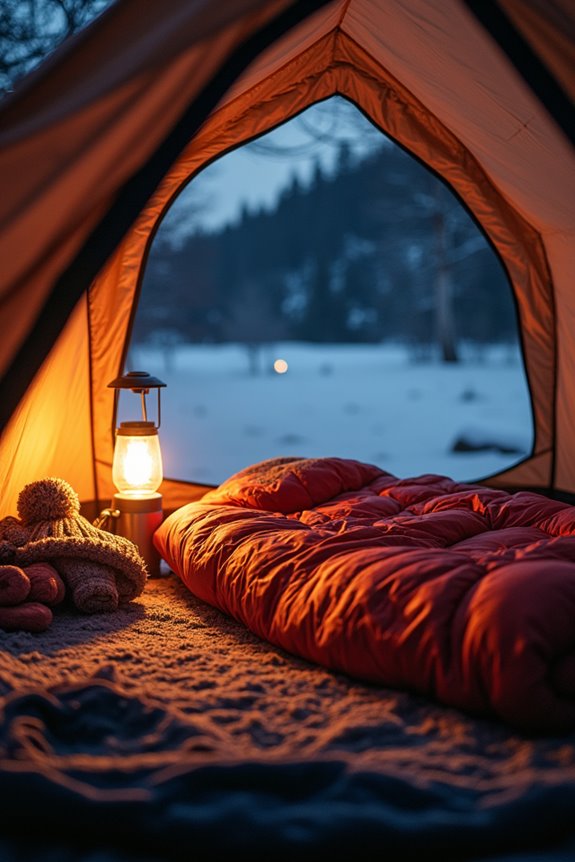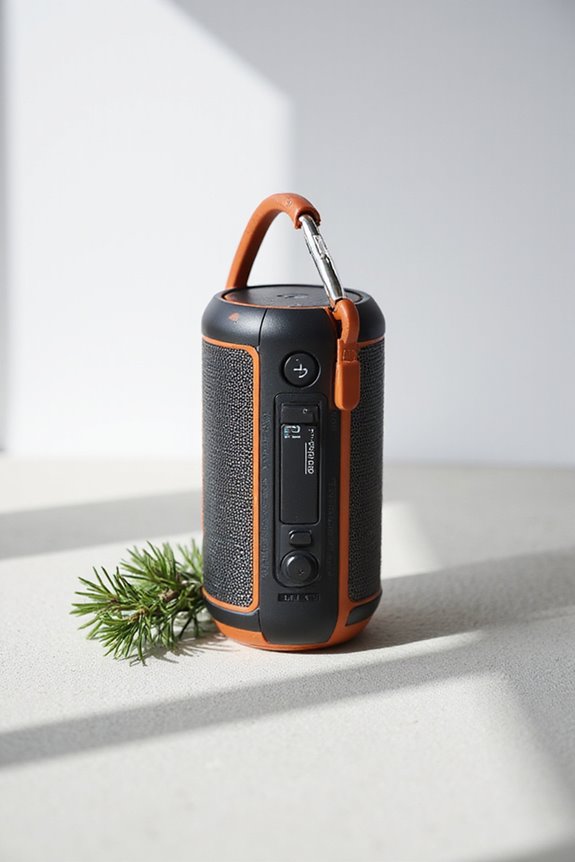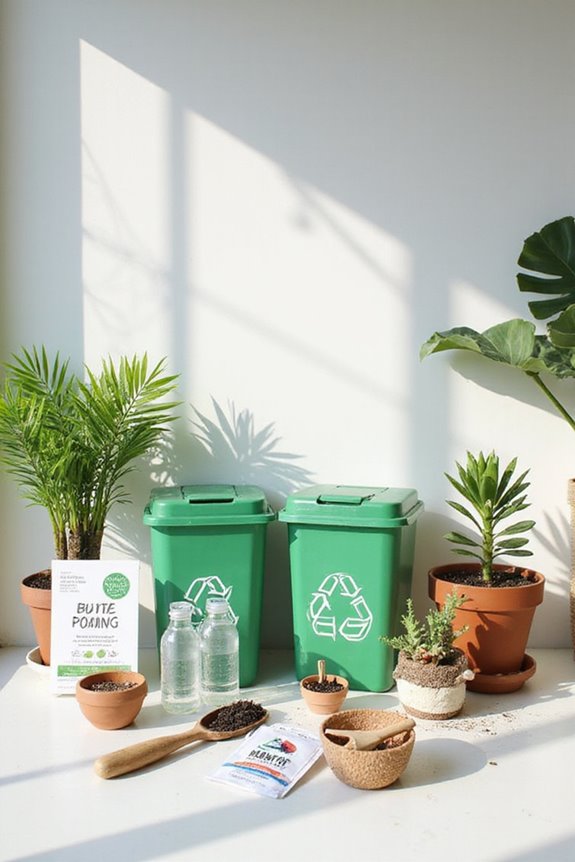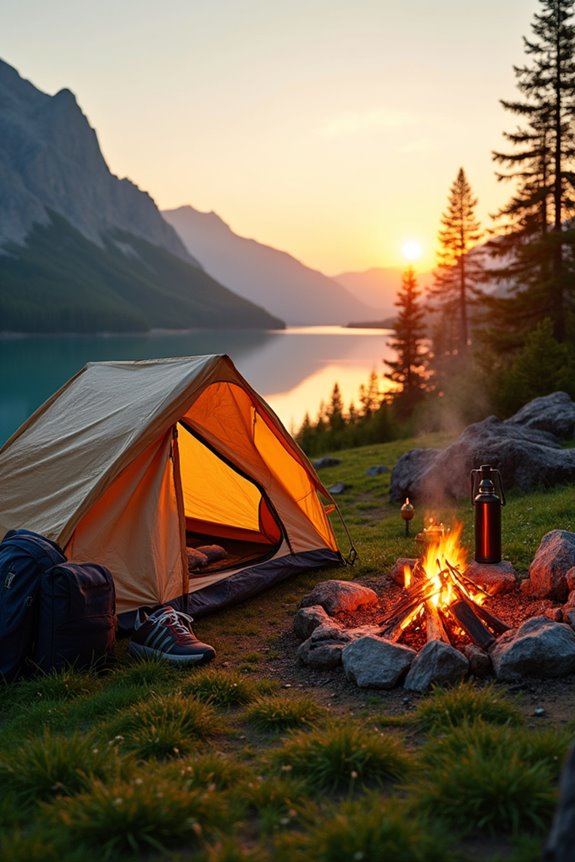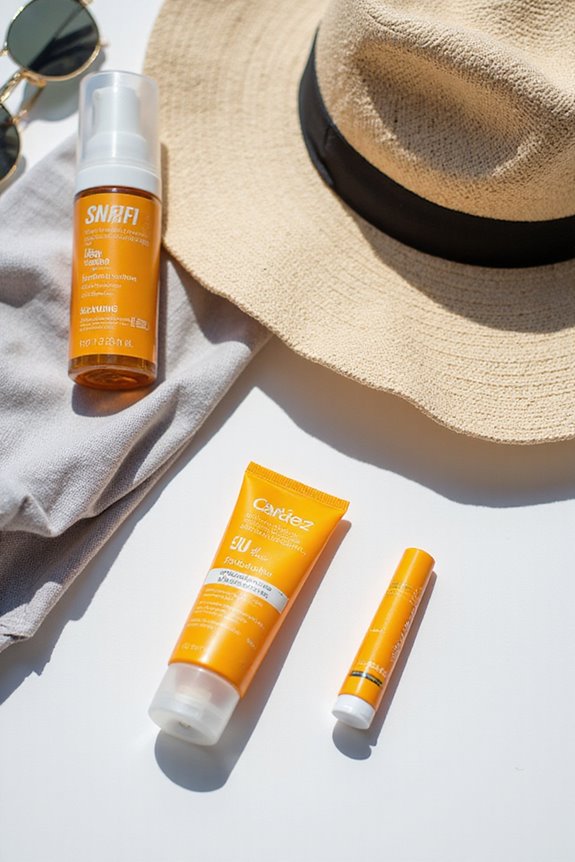To stay warm in a tent overnight, it’s all about insulation and smart planning. First, lay down dried leaves or a cozy foam pad for ground insulation. Next, use reflective materials inside the tent to keep warmth in. Dressing in thermal layers, including a warm hat and socks, helps too. Choose a campsite shielded by trees, and always face the narrow side of the tent into the wind. Stick around for more tips on maximizing your camping comfort!
Key Takeaways
- Insulate the ground by using dried leaves or foam pads to create a barrier against cold surfaces.
- Line tent walls and roof with reflective materials to minimize heat loss and improve warmth.
- Wear thermal base layers and insulated mid-layers, along with waterproof outerwear for maximum heat retention.
- Choose a sheltered campsite with natural wind barriers and orient your tent to minimize wind exposure.
- Utilize reflective materials inside the tent and layer thermal blankets to trap body heat effectively.
Ground Insulation Techniques
When it comes to camping, the ground you choose can make all the difference between a cozy night under the stars and a chilly wake-up call. To keep the cold at bay, savvy campers often utilize various ground insulation materials. For instance, laying down dried leaves or hay can provide a surprisingly effective barrier against the chill. Using insulation layering techniques, like placing a foam pad or insulated sleeping pad under your sleeping bag, notably enhances warmth. A simple tarp can also make a world of difference, acting as a moisture barrier. If you’re feeling adventurous, layering multiple tarps or even repurposed blankets can create a snug haven, transforming your tent into a cozy retreat from the biting cold of the night.
Tent Wall and Roof Insulation
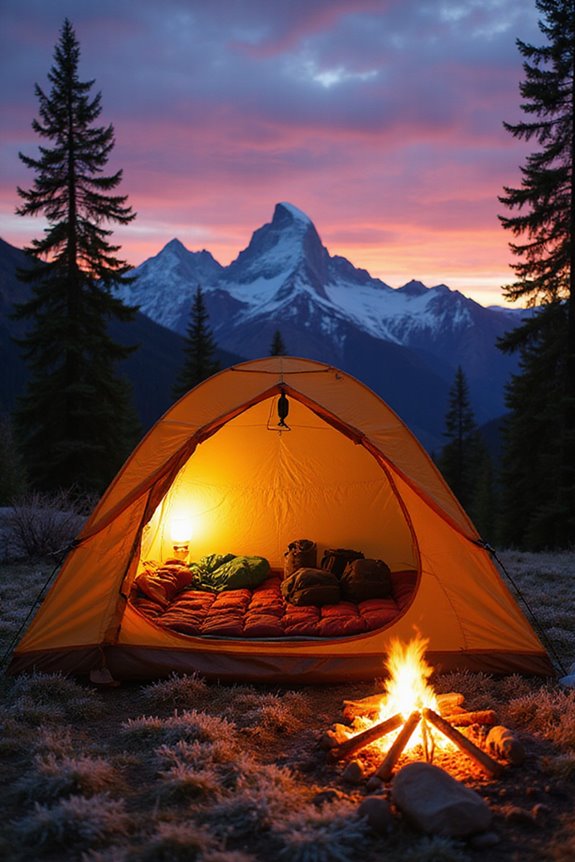
Camping in colder weather often feels like an adventure straight out of a survival movie, especially when it comes to keeping warm inside a tent. To tackle the chill, using reflective materials can make a world of difference. Lining the tent walls and roof with Mylar blankets or thermal foil reflects your body heat back to you, creating a cozy bubble. For extra warmth, adding insulating layers like thermal blankets or foam sheets can greatly reduce heat loss. These materials, when carefully attached without gaps, guarantee your tent stays snug against cold winds. Plus, hanging thick blankets can stabilize temperatures and reduce condensation, giving you a warmer, drier camping experience. With the right insulation, cold nights can transform into toasty adventures.
Personal Insulation and Clothing Choices
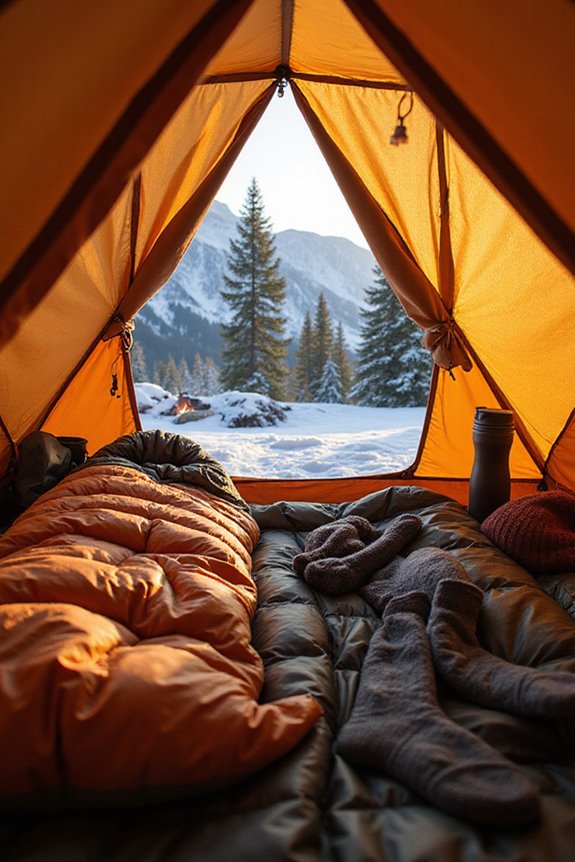
Keeping warm in a tent isn’t just about how well the walls are insulated; what you wear plays a huge role, too. The right clothing choices can make a world of difference. Thermal base layers, like those made from cozy merino wool, trap heat close to the body, while insulated mid-layers, such as a snuggly fleece jacket, add an extra layer of warmth. Don’t forget waterproof outerwear to fend off those pesky elements! Hats and gloves are essential, too; they prevent heat from escaping from your head and hands. And, of course, warm socks are a must—cold feet can ruin a good night’s sleep. Layering is key, allowing for adjustments as the night progresses, ensuring comfort throughout.
Site Selection and Wind Protection Strategies
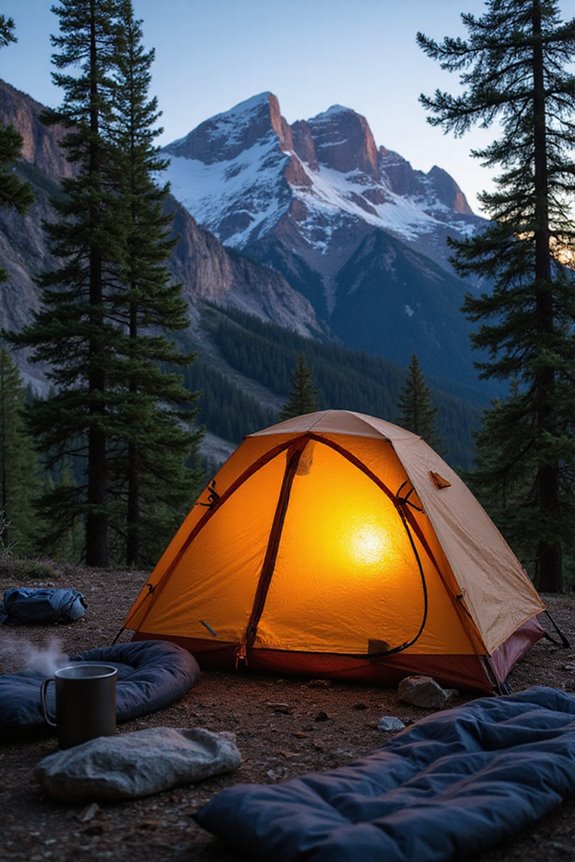
Selecting the right spot for a tent can make all the difference between a cozy night under the stars and a shivering, sleepless struggle against the elements. First off, find a level, dry terrain, steering clear of any rocks or debris; nobody wants to wake up with a sore back! Look for natural wind barriers like trees or boulders to shield your tent from those unexpected gusts. When considering tent orientation, position the narrow end into the wind, reducing pressure on the structure. And remember, keep those tent entrances away from the wind to avoid a chilly draft. If nature isn’t cooperating, you can always create your own wind barriers with stacked branches or tarps. Your comfort depends on it! Additionally, consider using a water resistance rating for your tent to ensure it can withstand any unexpected weather changes that may occur during your trip.
Heat Reflection and Body Heat Retention Methods
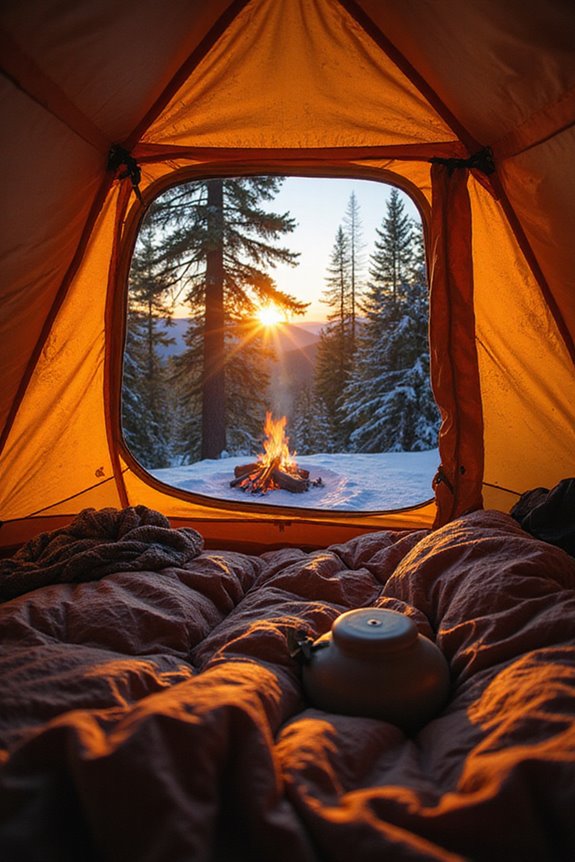
When it comes to staying warm in a tent overnight, the art of heat reflection and body heat retention plays an important role in transforming a chilly night into a cozy retreat. Using reflective materials, like Mylar or aluminum foil, can greatly enhance heat retention. These materials reflect your body heat back into the tent, creating a snug atmosphere. Placing thermal blankets between the tent fabric and rainfly adds an extra layer of insulation. To maximize warmth, layering is key—moisture-wicking base layers keep you dry, while insulating fleeces trap heat close to your skin. Remember, minimizing gaps is crucial; even a slight draft can steal your warmth. With the right techniques, those cold nights can turn into delightful experiences. Additionally, using a tent equipped with gear loft compatibility allows for better organization of warm clothing and gear, ensuring easy access to items that can help you stay cozy throughout the night.
Additional Tips for Thermal Comfort
While many campers focus solely on their sleeping bags and layers of clothing, there are plenty of other tricks to make a tent feel like a warm haven on those chilly nights. For instance, using ground insulation like tent footprints or foam pads can drastically reduce heat loss. Adding reflective emergency blankets on the tent floor not only boosts warmth but also enhances moisture control, keeping condensation at bay. Hanging insulated liners and blankets on the tent walls traps that precious warm air, too. Don’t forget about those snug mummy-shaped sleeping bags that hug you close, ensuring better heat retention. With these thermal layers and thoughtful strategies, campers can transform their tents into cozy retreats, even on the coldest nights.
Frequently Asked Questions
What Should I Consider When Buying a Sleeping Bag for Cold Weather?
When purchasing a sleeping bag for cold weather, one should consider that bags rated for extreme conditions can reach -60 °F. Focus on insulation type and temperature rating to guarantee adequate warmth and comfort during harsh temperatures.
How Do I Properly Layer My Clothing for Maximum Warmth?
To achieve maximum warmth, one should wear a base layer for moisture management, followed by an insulation layer to trap heat. This combination guarantees comfort and efficiency in regulating body temperature during various conditions.
Can I Use My Regular Blanket for Camping Insulation?
Like a candle flickering in the wind, regular blanket effectiveness wanes in camping conditions. While they offer some warmth, camping insulation alternatives, such as insulated sleeping bags, greatly outperform them in retaining heat and preventing cold ground loss.
What Is the Best Sleeping Pad Material for Cold Conditions?
The best sleeping pad material for cold conditions often combines inflatable pads for warmth with closed-cell foam pads for added insulation. This combination provides excellent thermal regulation and comfort, ensuring a restful night in frigid temperatures.
How Do I Choose the Right Campsite for Winter Camping?
Choosing a campsite location requires balancing safety and comfort; sheltered spots protect against harsh weather conditions while avoiding avalanche zones enhances safety. Understanding the environment guarantees a secure, enjoyable winter camping experience for all participants.

